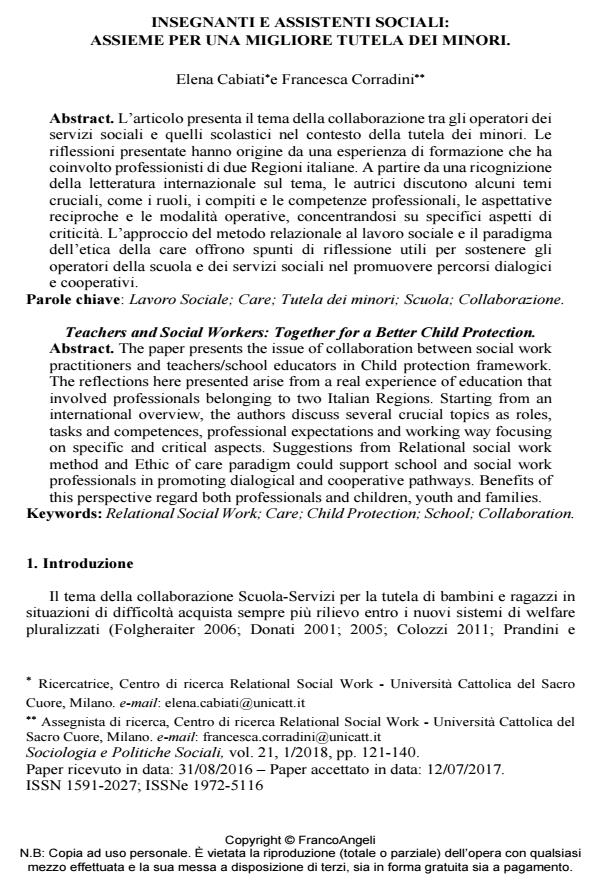Teachers and Social Workers: Together for a Better Child Protection
Journal title SOCIOLOGIA E POLITICHE SOCIALI
Author/s Elena Cabiati, Francesca Corradini
Publishing Year 2018 Issue 2018/1
Language Italian Pages 20 P. 121-140 File size 265 KB
DOI 10.3280/SP2018-001008
DOI is like a bar code for intellectual property: to have more infomation
click here
Below, you can see the article first page
If you want to buy this article in PDF format, you can do it, following the instructions to buy download credits

FrancoAngeli is member of Publishers International Linking Association, Inc (PILA), a not-for-profit association which run the CrossRef service enabling links to and from online scholarly content.
The paper presents the issue of collaboration between social work practitioners and teachers/school educators in Child protection framework. The reflections here presented arise from a real experience of education that involved professionals belonging to two Italian Regions. Starting from an international overview, the authors discuss several crucial topics as roles, tasks and competences, professional expectations and working way focusing on specific and critical aspects. Suggestions from Relational social work method and Ethic of care paradigm could support school and social work professionals in promoting dialogical and cooperative pathways. Benefits of this perspective regard both professionals and children, youth and families.
Keywords: Relational Social Work; Care; Child Protection; School; Collaboration
Elena Cabiati, Francesca Corradini, Insegnanti e assistenti sociali: assieme per una migliore tutela dei minori. in "SOCIOLOGIA E POLITICHE SOCIALI" 1/2018, pp 121-140, DOI: 10.3280/SP2018-001008